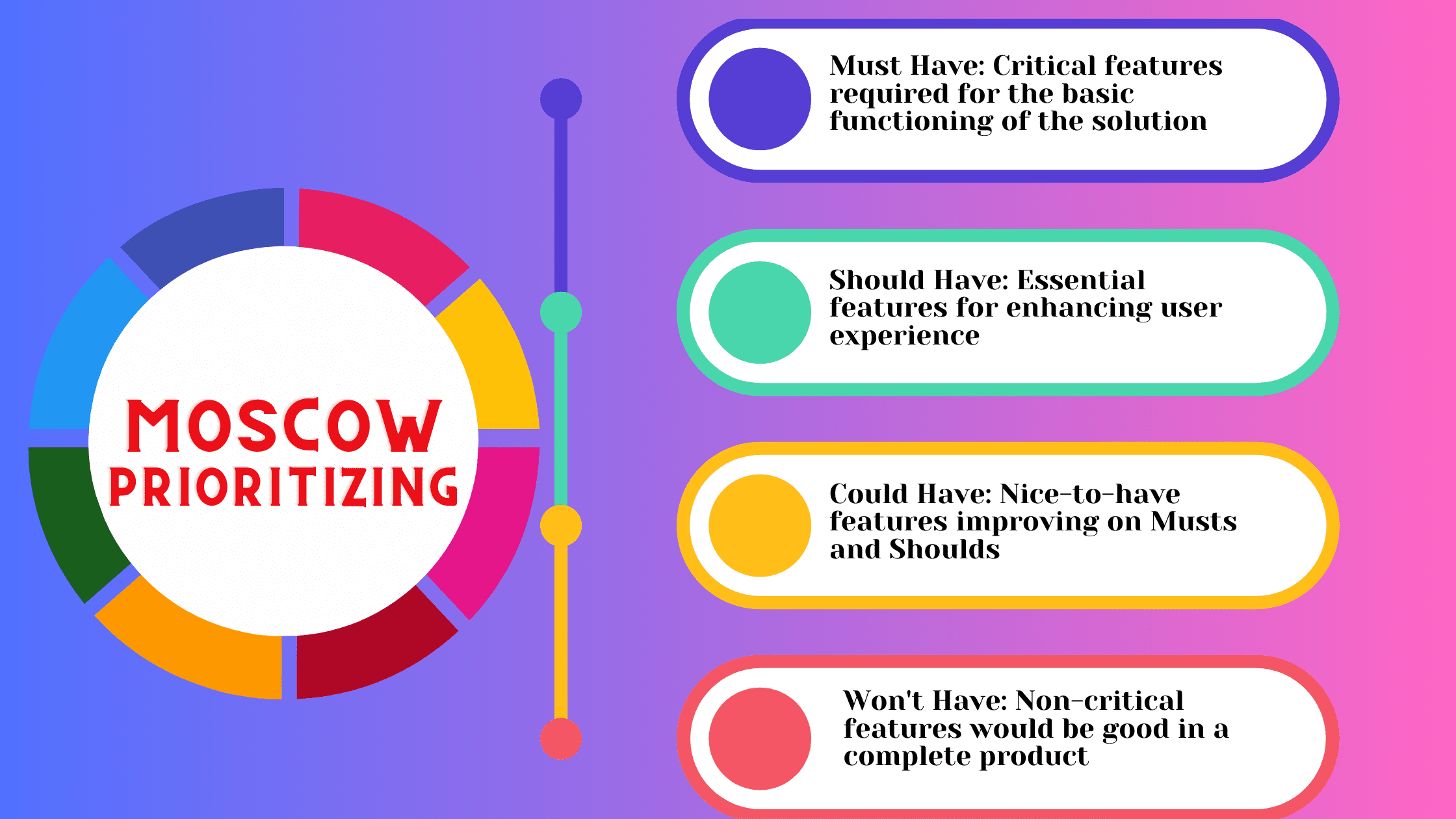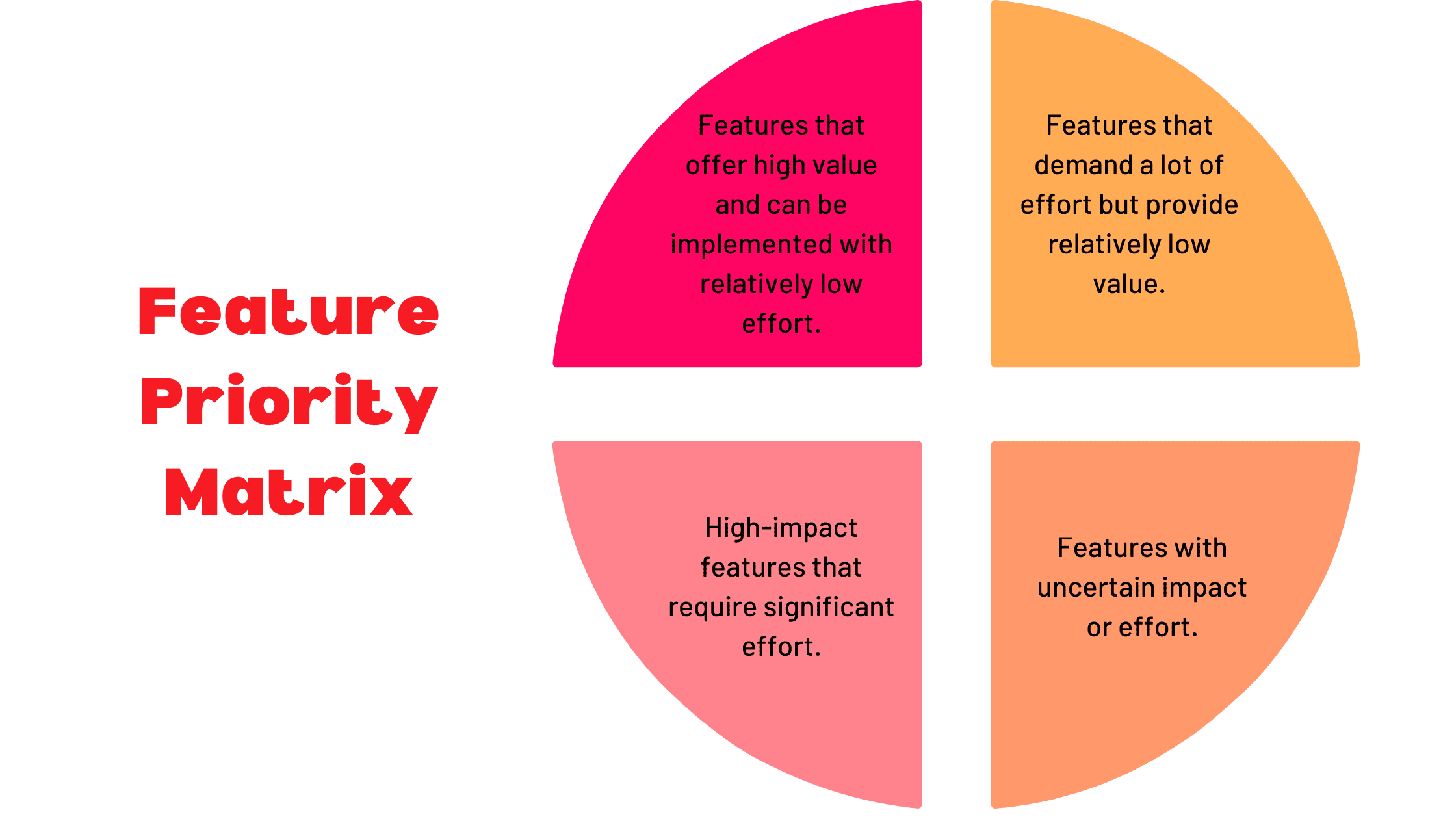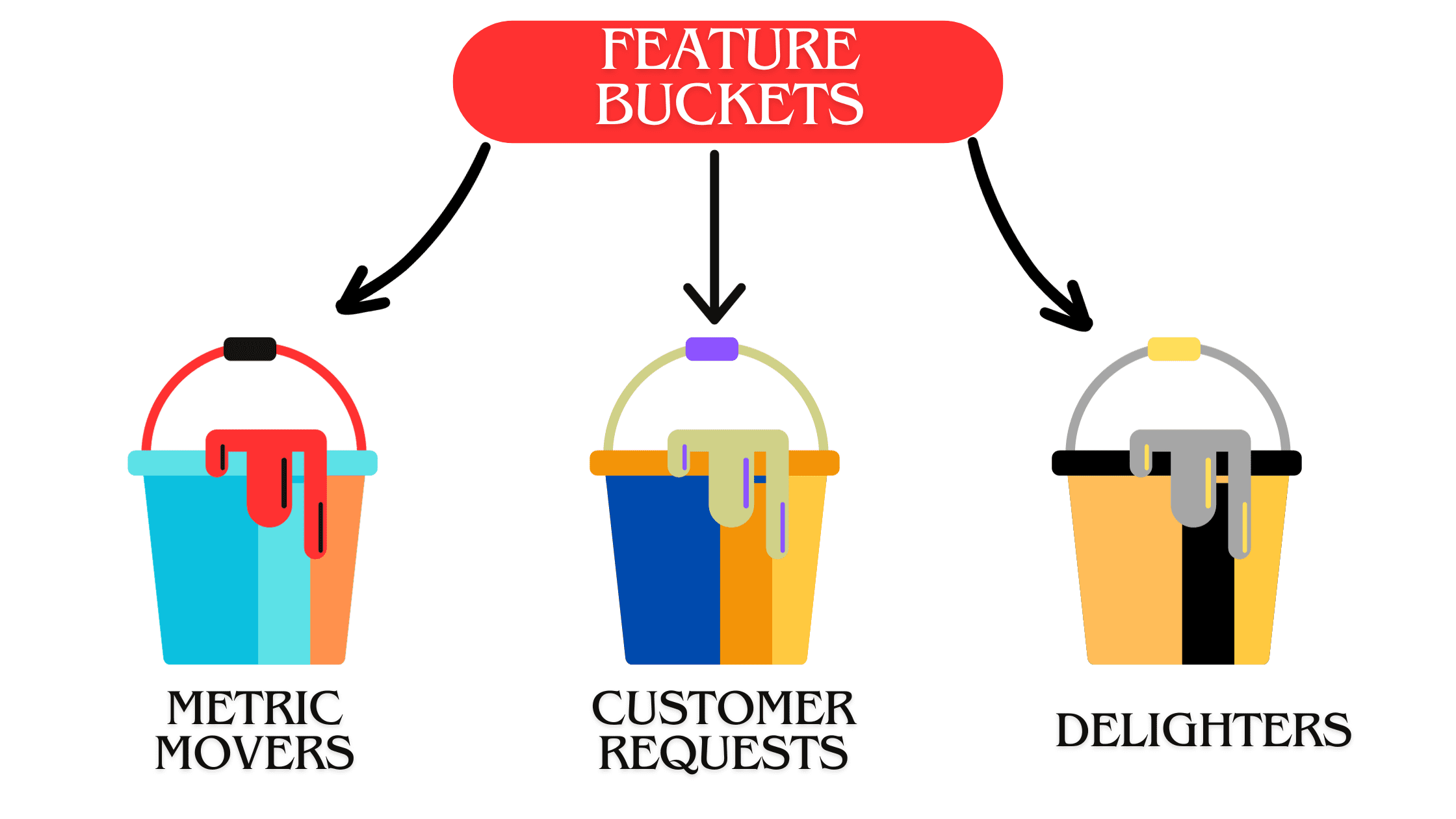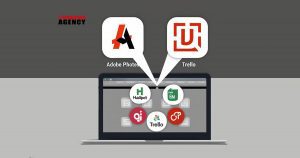According to a survey conducted by the SBA’s Office of Advocacy, the number of startups that fail during the first year is one in five, contrary to the widely held belief that 90% do so. This article aims to provide actionable insights to help startups overcome these challenges. By guiding readers through defining MVP features for your MVP launch and prioritizing them for subsequent releases, we aim to empower entrepreneurs to increase their chances of surviving the critical first year and thriving in the competitive business landscape. It can be quite helpful to learn from other people’s mistakes to avoid typical pitfalls, especially those that include misinterpreting market demands and failing to develop a Minimum Viable Product (MVP).
What is Minimum Viable Product (MVP) Feature Prioritization?
MVP feature prioritization refers to deciding which product features to focus on when building the initial version of a new software product. Teams creating Minimum Viable Products want to develop only the essential features that enable useful functionality for early adopters. It allows them to release an MVP quickly and gather feedback from real users to validate product ideas. Extensive feature sets that require more time and money come later once the initial product-market fit is proven.
Why Thoughtfully Prioritize Features for an MVP?
The core goal of an MVP launch is to test the fundamental value proposition of a digital product idea with real customers as soon as possible. It lets teams understand if they are solving a real pain point for users worth pursuing further. To enable rapid validating testing, MVPs deliberately contain a minimal feature set – only what allows for basic functionality, only some of what you might want in a full-blown product release.
Intelligently prioritizing which specific features make it into this first release is vital for several reasons:
- Save engineering resources by building features users don’t need. This risks delaying the launch to gather the critical learning of whether even the core idea resonates with anyone willing to pay.
- Avoid creating bloated products that try to be everything to everyone. Keeping the initial feature set focused directs design efforts only on enabling the core user workflows.
- Enable faster design iterations. Less complexity means developers can build functioning prototypes faster to put in front of users for feedback more often.
- Improve chances of funding and adoption. Investors and early adopters want an intense focus on excellently executing limited functionality over shallow support for many use cases.
The goal is to build the smallest possible set of excellent features that unlock essential but meaningful user value. It drives business learning while maximizing development efficiency, funding potential, and user delight. Intelligent feature prioritization is how product teams achieve this crucial balancing act while avoiding unnecessary complexity, delays, and costs.
Models for Prioritizing MVP Features
Several helpful models exist providing frameworks for evaluating possible features against criteria important for MVP launches when selecting what to build:
- MoSCoW Matrix
- Feature Priority Matrix
- Feature Buckets
- Kano model
- Numerical Assignment
- Bubble Sort Method
- Relative Weighting Prioritization
- Impact-Effort matrix
- Opportunity Scoring
- Speed Boat Technique
- User Story Mapping
- Cost of delay
MoSCoW Matrix


The MoSCoW model provides a straightforward way to classify potential features based on their priority for an MVP or any product launch:
Must Have: Critical features required for the basic functioning of the solution. It needs 100% availability in the initial release to be usable and testable. It cannot be deferred.
Should Have: Essential features for enhancing user experience. Aim to include it in the first release.
Could Have: Nice-to-have features improving on Musts and Shoulds. Prioritize including Shoulds before moving to these. Defer these if release timing or budget requires triage.
Won’t Have: Non-critical features would be good in a complete product but are only needed for an initial few releases once core functionality is well-established. Avoid spending any effort on these for now.
The MoSCoW Matrix is particularly useful in collaborative settings where stakeholders, including product owners and development teams, can collectively prioritize features and align on project goals.
Feature Priority Matrix

Quick Wins: Features that offer high value and can be implemented with relatively low effort. These are often prioritized to show immediate results and gain momentum.
Big Bets: High-impact features that require significant effort. These are strategic choices that, if successful, can have a substantial positive impact.
Maybes: Features with uncertain impact or effort. Further analysis or prototyping may be needed to determine their priority.
Time Sinks: Features that demand a lot of effort but provide relatively low value. These are often deprioritized.
This matrix visually represents the relationship between effort and impact, aiding in strategic decision-making and resource allocation.
Feature Buckets
Feature buckets provide a strategic approach to conceptualizing and organizing potential features for development based on their impact on your business. Three primary categories or buckets are commonly used in this methodology: customer requests, metric movers, and delighters.
Customer Requests:
This category includes all customer-generated requests, ranging from numerous suggestions, some with impractical implementation challenges and limited impact, to potentially game-changing ideas. Despite the absence of initial customer feedback in the early stages, like building a Minimum Viable Product (MVP), valuable insights can be obtained through interactions and surveys with potential customers.
Metric Movers:
Features falling into this bucket are those anticipated to bring about significant changes in key metrics. Examples include enhancements to customer retention (e.g., reducing churn), elevating Customer Satisfaction (CSAT), and improving Net Promoter Score (NPS).
Delighters:
The delighter bucket includes features tested in focus groups and trials, showing unexpected customer appreciation, even without explicit demand. Examples include innovative ideas like Amazon’s Buy Now button, conceived by a developer, tested successfully, and patented for widespread success.
Kano Model
The Kano Model provides an alternative lens for thinking about various features in terms of their potential impact on customer satisfaction:
Excitement Features: Surprising features that highly delight users by exceeding their expectations and addressing unstated needs. For example – real-time notifications on events users didn’t know were important to track but provided high-value awareness.
Performance Features: Handy features improve users’ ability to complete jobs towards their goals efficiently. Users expect and demand these, so while their absence hurts satisfaction greatly, their presence maintains the status quo. Example – accurate predictive search algorithms in ecommerce.
Threshold Features: Basic features users take for granted as minimum requirements for even considering a product. Absence is very dissatisfying, but presence does not improve satisfaction much since they are seen as “must-haves.” For example, a working login system with secure password management.
Numerical Assignment
Numeric Assignment, also known as Grouping, is a method for prioritizing features in MVP. In this approach, teams categorize features based on their perceived value and assign a numerical code to each group. To illustrate, features with high value could be given a code of 1, those with medium value a code of 2, and features with low value a code of 3.
Bubble Sort Method
This method involves teams comparing two features simultaneously, ranking them based on priority, and briefly explaining the reasoning. For instance, consider three features in a dating app development scenario: Embedded Videos, GPS Matching, and a Personality Questionnaire using the bubble sort technique.
Compare Embedded Videos to GPS Matching, and prioritize GPS Matching for local matches. Then, compare GPS Matching to the Personality Questionnaire, with GPS Matching again taking precedence. Finally, weigh Embedded Videos against the Personality Questionnaire, prioritizing videos due to current market demand.
In summary, the top three features are (1) GPS Matching, (2) Embedded Video, and (3) Personality Questionnaire, each with a brief explanation for its ranking.
Relative Weighting Prioritization
Weighting features involve assigning numerical values based on four criteria: Benefit, Penalty, Cost, and Risk.
Benefit represents the estimated value a feature provides to potential users. Penalty reflects the anticipated negative impact of not incorporating the feature. Risk considers the challenges designers and developers may encounter during the feature implementation. Cost involves the resources needed to implement the feature.
Product development teams assign scores ranging from 1 to 9 to each category. These scores are then plugged into the following equation:
Final Score = (Penalty Score + Benefit Score) / (Risk Score + Cost Score)
The resulting score can be either positive or negative. Teams should prioritize implementing features with the highest scores, considering positive and negative values. This approach helps teams make informed decisions based on a comprehensive assessment of the features.
Impact-Effort Matrix
The Impact-Effort Matrix is a vital tool in project management, similar to the Feature Priority Matrix but with a crucial difference. It focuses on identifying Minimum Viable Product (MVP) features that can bring significant impact or value to a project while considering the effort needed for implementation.
Unlike the Feature Priority Matrix, which prioritizes features based on business importance, the Impact-Effort Matrix prioritizes features based on their impact on customer or user experience. It evaluates potential effects on user satisfaction, usability, adoption, and overall customer value, considering user needs and the benefits or drawbacks of each feature.
To use this tool, divide the sheet into quadrants: High Impact – Low Effort, High Impact – High Effort, Low Impact – Low Effort, and Low Impact – High Effort. Place features in each quadrant based on their characteristics.
Opportunity Scoring
Opportunity scoring allows product teams to leverage direct user feedback on possible features using simple criteria:
Appeal Score: Quantified measure from customer research on user interest level generated by each potential feature. Features users explicitly ask for a score here.
Value Score: Estimated enhancement to user experience each feature could provide based on user needs analysis. Features highly aligned to articulated frustrations receive higher scores.
Effort Score: Expected complexity to implement each feature as assessed by engineering teams. Those requiring minimal new technology and builds score well here.
Guideline for opportunity scoring – features receiving high Appeal and Value scores but low Effort scores should gain priority for MVP inclusion. Features users don’t show interest in or that require massive effort to build can wait.
You can optionally assign numerical scores for weighting (say 1 low to 5 high) and compute weighted averages if you want a quantitative comparison across features.
Speed Boat Technique
This approach is all about teamwork, likened to a boat journey. Imagine the development team as sailors navigating their project boat through rough waters together. The goal is to guide the ‘boat’ toward an ‘island,’ representing the release of a Minimum Viable Product (MVP).
Project features are seen as either ‘anchors’ that could impede progress or ‘wind in sails’ that could drive the project toward success. The team engages in brainstorming sessions and seeks feedback to implement this method.
User Story Mapping
A widely effective method for organizing features in your Minimum Viable Product (MVP) involves an inclusive approach with all stakeholders. It begins by envisioning user interactions to determine high and low-priority features. For instance, when booking a hotel in a tourism app, specific substeps like selecting the right hotel and providing user details are identified.
Each substep becomes a user story structured as “As a user (User type), I want to (step), so that (value).” The team then documents and organizes these user stories based on goals and significance, helping identify features for the MVP and those for future releases.
Cost of Delay
The Cost of Delay concept emphasizes that delaying a feature release can result in missed opportunities or increased costs. Evaluation factors include market demand, customer needs, strategic importance, and considerations like revenue potential, customer satisfaction, and competitive advantage.
Features with higher delay costs, significant revenue potential, or critical customer needs are given priority. This approach aids in prioritizing minimum viable product features based on actual demand, ensuring timely delivery of essential elements.
How do you prioritize MVP feature requests?
What methods do you use to determine the priority of feature requests? There are various approaches to prioritizing feature requests, and we’ve highlighted some effective techniques above to guide you. It’s crucial to prioritize a frequently requested feature with careful consideration. When deciding whether to include it in the next release, it’s essential to take a rational approach. For instance, if a feature is in high demand but comes with significant risks, you must evaluate its potential impact on your customers.
Carefully Choose Your MVP Features
Prioritize features for your Minimum Viable Product (MVP) and precede essential functionalities over desired ones. Concentrate on enhancing the User Experience (UX) by focusing on key features that render your app functional and address genuine customer needs. Additionally, invest time in features that offer long-term value to your customers, as they will serve as the foundation of your application and are less likely to be replaced by newer features.
There are various methods for prioritizing features, as your approach will depend on your specific MVP strategy. Instead of searching for a universally superior technique, assess the MVP feature prioritization methods outlined in this article and determine their compatibility with your budget and capacity.
It’s worth noting that certain app features require a sizable user base to function effectively. These features should have lower priority if they are essential to your core functionality. As your app becomes operational, leverage customer support cases and feedback to prioritize new features for upcoming releases.
Conclusion:
As evident, numerous techniques are available for application. The primary concept is to highlight your client. Ultimately, they will shape the success of your startup. Avoid analyzing MVP features in isolation. Engage various specialists within your team and be open to seeking user feedback.






